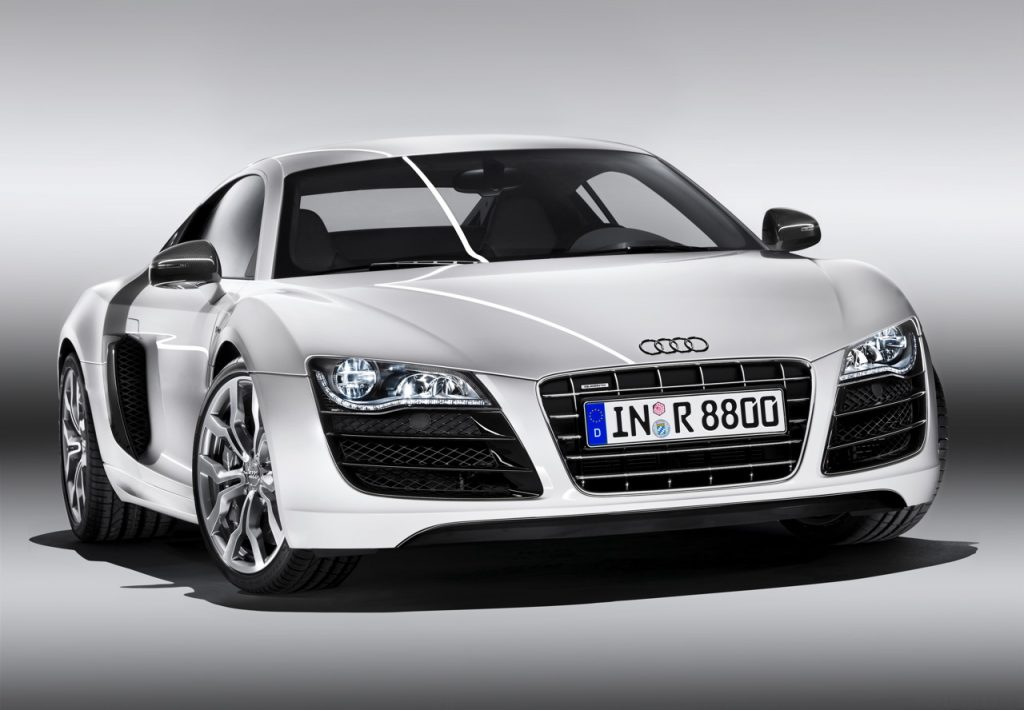Audi has been synonymous with high-quality, exciting road vehicles for 106 years. The German brand, known for its ‘Vorsprung durch Technik’ slogan, which translates to ‘Advancement through technology’, has some of the of the bestselling luxury automobiles in the world.
So what advancements have been made by Audi through technology in recent years? With new products recently being unveiled in both London and Beijing, check out some latest updates …
Audi R8 Spyer
The Audi R8 Spyder made its domestic debut in Audi City London, Piccadilly on 25 April 2016. Described by Audi as ‘the new generation of the convertible super sports car’, it can reach top speeds of 197mph.
So how does it differ from Audi’s previous models? Find out below.
The V10 power unit
What makes the Audi R8 Spyder stand out? You need look no further than its potent, mid-mounted ten-cylinder engine, which is the latest in the range.
The V10 engine has 540PS of power and 540 Nm (398.3 lb-ft) of torque at 6,500 rpm. Its road performance is exceptional, and it can sprint from 0 to 62mph in just 3.6 seconds.
The V10’s naturally aspirated engine has special new features, of dual injection and a freewheeling mode, which improves fuel economy by 10 per cent by ‘decoupling’ whenever possible. It can distribute the drive, which varies depending on the driving conditions. In extreme cases it can transfer up to 100 percent to the front or rear wheels.
The V10 allows for lightning-fast shifts, with its seven-speed S tronic dual-clutch transmission. This also funnels power through the brand-new quattro drive system, which has an electro-hydraulically activated, multi-plate clutch at the front axle.
Intelligent control system
The Audi drive select system has an intelligent control system installed, which allows drivers to choose from four driving systems, from comfort to dynamic, as well as dry, wet and snow. This is intended to make handling the car more stable on any road surface. The fully digital Audi virtual cockpit presents all information using rich 3D graphics.
The control system also sports the intuitively-operated MMI navigation, plus MMI touch, the Audi Music Interface, belt microphones and the MMI search function. There is also an Audi smartphone interface, which enables selected content from compatible smartphones to be displayed by the virtual cockpit.
Multi-material Audi Space Frame (ASF)
The car is structured around the multi-material Audi Space Frame, which has the dual benefit of being lightweight and strong. As a result, the car’s dry weight is only 1,612k.
The ASF is an intelligent mix of aluminium and carbon fibre, with aluminium components accounting for just under 80 per cent of the frame’s weight. The aluminium parts form a lattice which incorporates specialist reinforcements in the sills, A-pillars and windscreen frame.
The weight of individual components has been reduced by 10 per cent through Audi’s manufacturing methods, which in total makes the body just 208kgs, and boost torsional rigidity by over 50 per cent, when compared with the previous model.
Lightweight cloth hood
The lightweight cloth hood differentiates the R8 Spyder from the Coupe of the same model. The cloth hood tapers into two fins, which helps the hood to match the sleek lines of the sports car. The opening and closure of the hood is automated, and can be adjusted in speeds of up to 31mph, and the process takes just 20 seconds at the touch of a button.
The majority is hand-built
A great percentage of the Audi R8 Spyder is hand-crafted near Neckarsulm, Germany. This makes the car more customisable than more standard vehicles, and the interior and exterior can be tailored towards individual preference. Items that can be customised include the front spoiler, sideblades and diffuser. LED headlights with laser technology can also be added, which maximise visibility for the driver. The hand-crafted nature of the vehicle is also Audi’s additional assurance of quality.
It is available to order from the end of spring, with the first deliveries being made towards the close of this year.
Brand new mixed mobility solution
On the same day, at Auto China 2016 at Beijing, Audi presented a new mixed mobility concept for urban areas.
Based on the Audi Q3, this concept demonstrated Audi’s urban compact SUV. It focusses on young, progressive drivers who want enhanced mobility when they’re travelling through cities.
With this in mind, the concept is a vehicle which has a longboard – similar to a skateboard – integrated into the bumper. The electrically-powered, multifunctional longboard measures 1.05 metres in length, and is charged when loaded into the bonnet; ensuring it is ready-to-use when the driver needs it. The longboard’s battery can travel for over seven miles without needing charging, and can travel up to 18mph.
The longboard has three different riding modes, to add an additional versatility. Scooter Mode, where the phone can be clipped to handlebars to give directions, Sport Mode, with the handlebar folded down, and the third mode, where the board transports luggage or shopping bags.
The car’s interior system calculates the fastest mixed mobility journey for the user, based on realtime data, using the Audi MMI connect App on the user’s smartphone that continues to guide the route. If the system recommends using the longboard, it will also suggest a parking space nearby, for a seamless commute.
Get more info about Audi offers.


